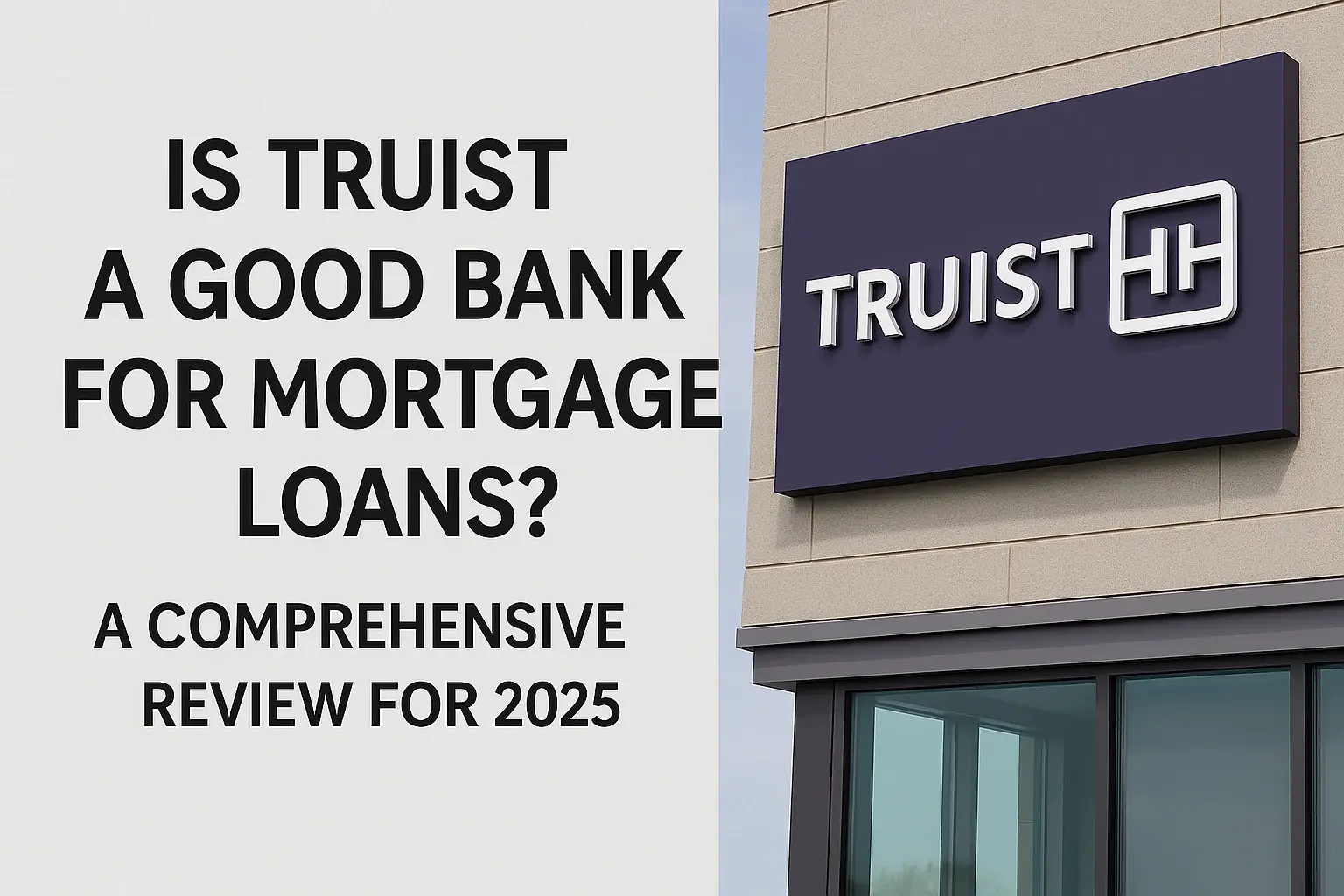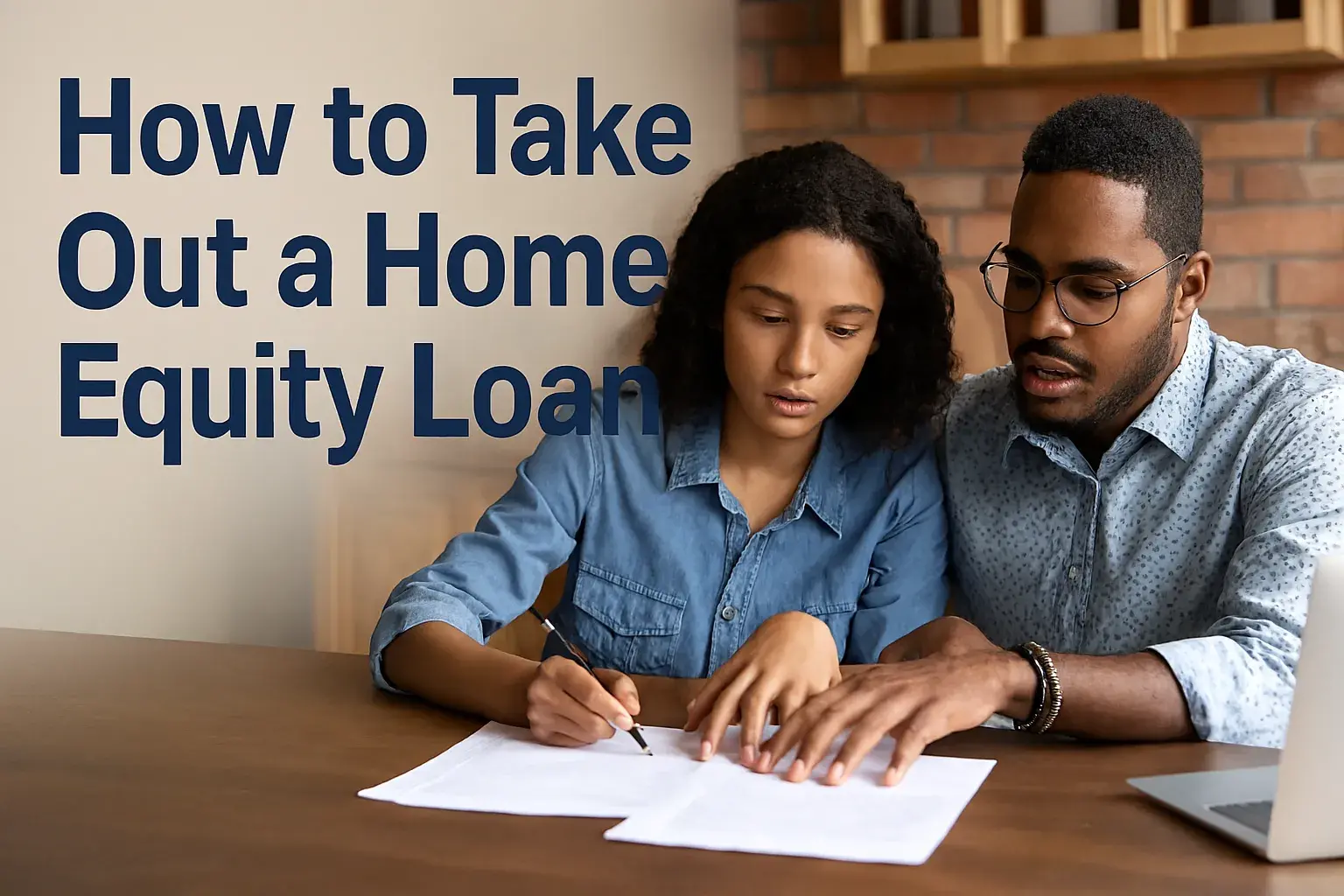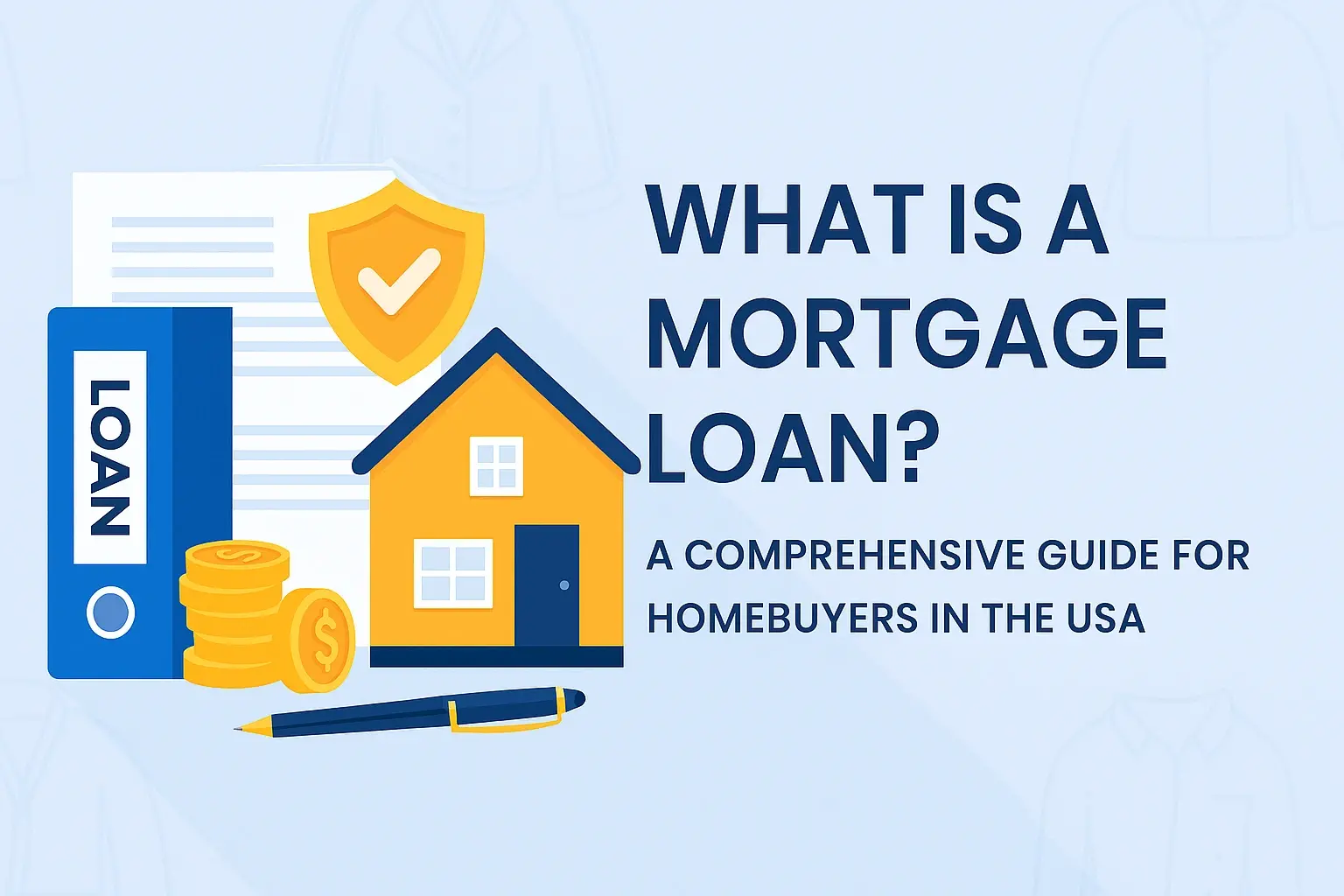-
Posted on: 25 Jul 2025

-
Buying a home is one of the most significant financial decisions you’ll ever make, and choosing the right mortgage lender can make or break your experience. With countless options available, it’s crucial to evaluate lenders based on their loan offerings, interest rates, customer service, and overall reputation. Truist Bank, a major U.S. financial institution, is a popular choice for many homebuyers. But is Truist a good bank for mortgage loans in 2025? In this comprehensive review, we’ll explore Truist’s mortgage services, analyze their strengths and weaknesses, compare them to other lenders, and provide insights to help you decide if they’re the right fit for your homebuying journey.
Who is Truist Bank?
Truist Bank was formed in December 2019 through the merger of BB&T (Branch Banking and Trust Company) and SunTrust Banks, two well-established institutions with deep roots in the southeastern United States. Headquartered in Charlotte, North Carolina, Truist is now one of the top 10 largest banks in the U.S., serving over 15 million customers across 17 states and Washington, D.C. In addition to mortgages, Truist offers a wide range of financial services, including personal banking, credit cards, auto loans, and investment products. Their mortgage division is a key focus, providing loans to homebuyers and homeowners in 47 states, excluding Alaska, Arizona, and Hawaii.
Truist’s Mortgage Offerings
Truist offers a diverse range of mortgage products to meet the needs of various borrowers. Here’s a breakdown of their key offerings:
-
Conventional Loans: Standard mortgages not insured by the government, suitable for borrowers with good credit and stable income.
-
FHA Loans: Government-insured loans with down payments as low as 3.5%, ideal for first-time buyers or those with moderate credit scores (minimum 620).
-
VA Loans: For veterans, active-duty military members, and their spouses, offering competitive rates and no down payment.
-
USDA Loans: For rural homebuyers, with no down payment and lenient credit requirements.
-
Jumbo Loans: For high-value properties exceeding conforming loan limits (e.g., $726,200 in most areas in 2025).
-
Refinancing: Options include rate-and-term refinancing to lower payments or cash-out refinancing to access home equity.
-
Home Equity Lines of Credit (HELOCs): Flexible borrowing against home equity, though not available in all states.
-
Construction Loans: Financing for building a new home, transitioning to a permanent mortgage upon completion.
-
Specialty Loans: This category includes doctor loans for medical professionals, which may exclude student loan debt from debt-to-income ratios, as well as other programs such as HomeReady and HomePossible for low-down-payment borrowers.
Truist also offers the Community Homeownership Incentive Program (CHIP), which provides down payment assistance and lender credits for eligible borrowers, often targeting first-time or low-to-middle-income buyers. Additionally, they offer up to $500 in lender credits for closing costs on purchase and refinance loans.
Truist Mortgage Products Overview
Loan Type
Minimum Down Payment
Minimum Credit Score
Key Features
Conventional
3%
620
Fixed or adjustable rates, suitable for most borrowers
FHA
3.5%
620
Lower credit requirements, government-insured
VA
0%
Not disclosed
No down payment, no PMI, for veterans and military
USDA
0%
Not disclosed
For rural properties, no down payment
Jumbo
Varies
Not disclosed
For high-value homes, up to $5 million
HELOC
N/A
Not disclosed
Flexible borrowing against home equity, variable or fixed rates
Construction
Varies
Not disclosed
Financing for new home construction
Doctor Loans
0%
Not disclosed
Excludes student loan debt, tailored for medical professionals
Sources: Truist Official Website, NerdWallet
Strengths of Truist’s Mortgage Services
Based on reviews from sources like US News, Bankrate, NerdWallet, and Business Insider, Truist has several strengths that make it a compelling choice for mortgage loans:
-
Diverse Loan Options: Truist’s wide range of products caters to various borrowers, from first-time homebuyers to those seeking high-value jumbo loans or specialized programs like doctor loans. This versatility ensures most borrowers can find a suitable option.
-
Competitive Rates: Truist’s mortgage rates are often below the national average, earning high affordability scores (e.g., 4.9/5 from Bankrate). This makes their loans cost-effective for many borrowers.
-
Low or No Down Payment Options: With programs like CHIP, HomeReady, and HomePossible, Truist offers down payments as low as 0% for VA and USDA loans, 3% for conventional loans, and 3.5% for FHA loans, making homeownership accessible to those with limited savings.
-
Down Payment Assistance and Credits: Programs like CHIP offer financial assistance, and Truist provides lender credits (up to $500) to help cover closing costs, thereby reducing upfront expenses.
-
Convenient Application Process: Borrowers can apply online, by phone (855-257-4040), or in person at one of Truist’s 1,900+ branches. The online platform allows document uploads and real-time application tracking, enhancing convenience.
-
Strong Regional Presence: Truist’s extensive branch network in the southeastern U.S. makes it a go-to choice for borrowers who prefer in-person support alongside digital tools.
-
Digital Tools: Truist offers online calculators, rate checkers, and preapproval tools, helping borrowers plan their home purchase effectively. Their mobile app also supports mortgage management, including payments and escrow tracking.
Sources: US News, Bankrate
Weaknesses of Truist’s Mortgage Services
Despite its strengths, Truist has some limitations that potential borrowers should consider:
-
Geographic Limitations: Truist does not offer mortgages in Alaska, Arizona, or Hawaii, which excludes borrowers in these states.
-
Mixed Customer Service Ratings: While US News rates Truist’s customer service at 3.9/5, J.D. Power’s 2024 U.S. Mortgage Servicer Satisfaction Study gives them a below-average score of 587/1,000 (industry average: 606). Some borrowers report issues with communication and responsiveness.
-
Higher Rates for Some Borrowers: NerdWallet notes that Truist’s interest rates are higher than average based on federal data, which could be a drawback for borrowers with excellent credit who might find better rates elsewhere.
-
Lack of Fee Transparency: Truist does not disclose all fees online, which can make it harder to compare total loan costs upfront. Borrowers may need to contact a loan officer for detailed fee information.
-
Negative Customer Feedback: On platforms like Trustpilot (1.2/5 based on 1,548 reviews) and WalletHub, some customers report frustrations with account management, customer service, and the application process, describing the system as “archaic” or “client-unfriendly.”
-
Limited HELOC Availability: While Truist offers HELOCs, they are not available in every state, which could limit options for homeowners seeking to tap into their equity.
Sources: NerdWallet, Yahoo Finance
Customer Satisfaction and Reputation
Customer satisfaction with Truist’s mortgage services is a mixed bag. According to J.D. Power’s 2024 U.S. Mortgage Servicer Satisfaction Study, Truist scored 587 out of 1,000, below the industry average of 606, indicating room for improvement in areas like communication and problem resolution. Their 2023 Origination Satisfaction score was slightly better at 728/1,000, just below the industry average of 730.
The Better Business Bureau (BBB) has given Truist an A+ rating, reflecting the company's commitment to addressing customer complaints. However, consumer review platforms tell a different story. Trustpilot rates Truist at 1.2/5 based on 1,548 reviews, with many citing issues with customer service and online account access. WalletHub also reports negative feedback, with some borrowers describing difficulties with mortgage account management and communication.
In 2023, the Consumer Financial Protection Bureau (CFPB) received 477 mortgage-related complaints about Truist, with most closed with an explanation, 43 with nonmonetary relief, and 19 with monetary relief. While this number is notable, it should be viewed in the context of Truist’s large customer base.
Sources: US News, WalletHub
Truist Customer Satisfaction Ratings
Source
Rating
Details
US News
4.1/5 (Overall), 3.9/5 (Customer Service)
Strong loan variety, decent customer service
Bankrate
4.3/5
High affordability (4.9/5), lower borrower experience (3/5)
NerdWallet
4.0/5
Good for low-down-payment borrowers, higher rates noted
J.D. Power (2024)
587/1,000 (Servicer Satisfaction)
Below industry average (606/1,000)
Trustpilot
1.2/5 (1,548 reviews)
Poor customer feedback, issues with service and account management
BBB
A+
Accredited since 1967, strong complaint resolution
Sources: J.D. Power, Trustpilot via US News
The Application Process
Truist’s mortgage application process is designed to be flexible and accessible. Here’s how it works:
-
Preapproval: Start by requesting a preapproval online, by phone (855-257-4040), or in person. This step helps determine your borrowing power and signals to sellers that you’re a serious buyer.
-
Application: Once you’ve found a home, complete the full application online, by phone, or at a branch. You’ll need to provide financial documents like pay stubs, bank statements, and tax returns.
-
Loan Estimate: Within three business days, Truist provides a loan estimate detailing the interest rate, monthly payment, and estimated closing costs.
-
Rate Lock: About 15 days before closing, you can lock in your rate to protect against market fluctuations.
-
Closing: Three days before closing, you’ll receive a closing disclosure with final terms. Closing can be done in person or remotely, depending on state regulations.
While the process is generally streamlined, some borrowers report challenges, such as delays in communication or difficulty reaching loan officers. Truist’s online platform and mobile app are praised for their ease of use, allowing borrowers to track their application and manage their mortgage post-closing.
Comparing Truist to Other Lenders
To determine if Truist is the right choice, it’s helpful to compare it with other major mortgage lenders:
-
Rocket Mortgage: Known for its fully online application process and fast approvals, Rocket Mortgage is ideal for tech-savvy borrowers. However, it may lack the in-person support Truist offers.
-
Wells Fargo: Offers a similar range of loan products but has faced criticism for past customer service issues. Their rates are competitive, but their application process may be less streamlined.
-
Guaranteed Rate: A top online lender with low rates and no/low down payment options, ideal for first-time buyers. They lack Truist’s physical branch network.
-
NBKC Bank: Specializes in FHA and VA loans with excellent rates, but may not offer the same variety of conventional or jumbo loans as Truist.
Truist stands out for its balance of digital tools and physical branches, making it a good middle ground for borrowers who want both convenience and in-person support.
Compare Truist vs. Other Lenders
Lender
Key Strengths
Key Weaknesses
Truist
Wide loan variety, low-down-payment options, regional branches
Mixed customer service, limited to 3 states
Rocket Mortgage
Fast online process, competitive rates
Limited in-person support
Wells Fargo
Broad loan options, large branch network
Past customer service issues
Guaranteed Rate
Low rates, no/low down payment programs
Fewer physical branches
NBKC Bank
Strong FHA/VA loans, excellent rates
Limited conventional/jumbo options
Special Programs and IncentivesTruist offers several programs to make homeownership more accessible:
-
Community Homeownership Incentive Program (CHIP): Provides down payment assistance and no private mortgage insurance (PMI) for eligible low-to-middle-income borrowers.
-
HomeReady and HomePossible: Backed by Fannie Mae and Freddie Mac, these programs allow down payments as low as 3%, targeting first-time buyers.
-
Doctor Loans: Designed for medical professionals, these loans may exclude student loan debt from debt-to-income calculations and offer up to 100% financing without PMI.
-
Lender Credits: Up to $500 toward closing costs for purchase and refinance loans, reducing upfront expenses.
These programs make Truist particularly appealing for first-time buyers, low-income borrowers, and medical professionals.
Is Truist Right for You?
Whether Truist is a good bank for your mortgage depends on your specific needs:
-
First-Time Homebuyers: Truist’s low-down-payment options (as low as 0% for VA/USDA loans) and assistance programs like CHIP make it a strong choice.
-
Borrowers Seeking Variety: With conventional, government-backed, jumbo, and specialty loans, Truist caters to diverse needs.
-
Those Valuing Flexibility: The option to apply online, by phone, or in person, combined with a robust branch network, suits borrowers who want both digital and in-person support.
-
Borrowers with Excellent Credit: You might find better rates elsewhere, so compare offers from multiple lenders.
-
Residents of Alaska, Arizona, or Hawaii: Truist doesn’t operate in these states, so you’ll need to look at other lenders.
-
Customer Service Prioritizers: If top-notch service is critical, Truist’s mixed reviews suggest exploring other options with higher satisfaction ratings.
Tips for Choosing a Mortgage Lender
To ensure you select the best lender for your needs, consider these tips:
-
Compare Multiple Lenders: Request quotes from at least three lenders to compare rates, fees, and terms. Small differences in rates can save thousands over a lifetime.
-
Check Eligibility Requirements: Confirm you meet the lender’s credit, income, and down payment criteria.
-
Read Reviews Carefully: Look at feedback on platforms like Trustpilot, WalletHub, and the BBB, but weigh it against the lender’s overall reputation.
-
Understand the Process: Ask about application timelines, required documents, and closing procedures to avoid surprises.
-
Evaluate Long-Term Service: Consider how the lender will handle your loan after closing, especially for ongoing support or issues.
-
Look for Incentives: Seek out programs like down payment assistance or lender credits, especially if you’re a first-time buyer or have limited funds.
Conclusion
Truist Bank is a strong contender in the mortgage lending market, offering a wide range of loan products, competitive rates, and programs tailored to first-time buyers, low-income borrowers, and medical professionals. Their low-down-payment options and digital tools make them accessible and convenient, particularly for those in the southeastern U.S. However, mixed customer service reviews, limited geographic availability, and potentially higher rates for strong-credit borrowers mean it’s not the perfect fit for everyone. By comparing Truist with other lenders and carefully evaluating your needs, you can make an informed decision that sets you up for success as a homeowner.
Faq
1. Who is Truist Bank, and are they a major mortgage lender?
Truist Bank is the result of the 2019 merger between SunTrust Bank and BB&T (Branch Banking & Trust). It is now one of the largest financial institutions in the United States, ranking consistently among the top 10 mortgage lenders by volume. Their size gives them significant lending power and a wide range of loan products.
2. What types of mortgage loans does Truist offer?
Truist offers a comprehensive suite of mortgage products, including: Conventional Loans (conforming and jumbo) FHA Loans (low down payment options) VA Loans (for veterans and service members) USDA Loans (for rural homebuyers) Specialized Programs like their Community Homeownership Incentive Program (CHIP) for low-to-moderate income borrowers, which offers down payment and closing cost assistance.
3. Does Truist offer any special mortgage programs or first-time homebuyer assistance?
Yes, this is one of their strengths. Their CHIP program is a standout feature, providing grants that do not require repayment for eligible borrowers. They also offer resources and educational tools specifically geared toward first-time homebuyers to guide them through the process.
4. How are Truist's mortgage interest rates and fees compared to other lenders?
Truist's rates are generally competitive with other large national banks. However, like all lenders, rates fluctuate daily and are based on individual creditworthiness. It's crucial to get a personalized Loan Estimate from Truist and at least one or two other lenders (like a credit union or online lender) to compare the Annual Percentage Rate (APR), which includes both interest and fees.
5. What is the general consensus on Truist's customer service for mortgages?
Customer service experiences can be mixed, which is common for very large banks. Reviews often highlight that the experience heavily depends on the individual loan officer you work with. Some borrowers report a smooth, professional process, while others cite challenges with communication and slow processing times. Being proactive and having a responsive loan officer is key.
6. What are the pros of getting a mortgage with Truist?
Size and Stability: As a top-10 lender, they are a stable and reliable entity. Branch Access: With over 2,000 branches primarily in the Southeast and Mid-Atlantic, in-person service is available for many customers. Program Diversity: A wide array of loan types and specialty programs like CHIP. Relationship Discounts: Existing Truist clients may qualify for discounts on origination fees.
7. What are the potential cons or drawbacks?
Inconsistent Service: Service quality can vary by branch and loan officer. Potentially Slower Process: Large banks can sometimes be less agile than smaller mortgage brokers or online lenders. Fees: Some reviews indicate their origination or processing fees can be higher than average, though this must be compared on a case-by-case basis.
8. Is the mortgage process with Truist fully online, or do I need to visit a branch?
Truist offers a hybrid model. You can start the application, upload documents, and manage your loan through their online portal and mobile app. However, for more complex situations or if you prefer face-to-face interaction, you can work directly with a mortgage loan officer at a local branch.
9. How does Truist handle mortgage servicing? Will they keep my loan, or sell it?
Like most large originators, Truist often sells mortgages on the secondary market to Fannie Mae or Freddie Mac. However, they frequently retain the servicing rights. This means you might make your monthly payment to Truist even if they don't technically own the note anymore, which can simplify things for the borrower.
10. So, is Truist a good choice for me in 2025?
Truist can be an excellent choice, particularly if: You are a first-time homebuyer looking for down payment assistance (like the CHIP program). You are an existing Truist customer who may qualify for relationship discounts. You value the option of in-person service. You shop around and find their rates and fees are competitive for your profile. The best practice is to get pre-approved with Truist and another type of lender (e.g., an online lender and a local credit union) to compare your official offers before making a decision.
-







